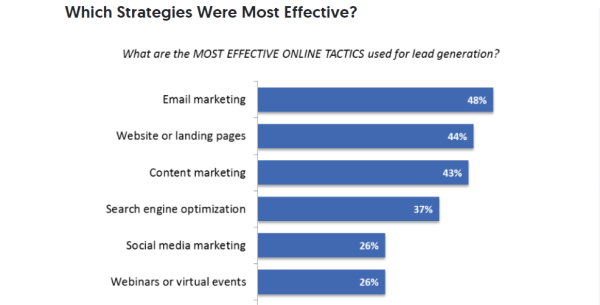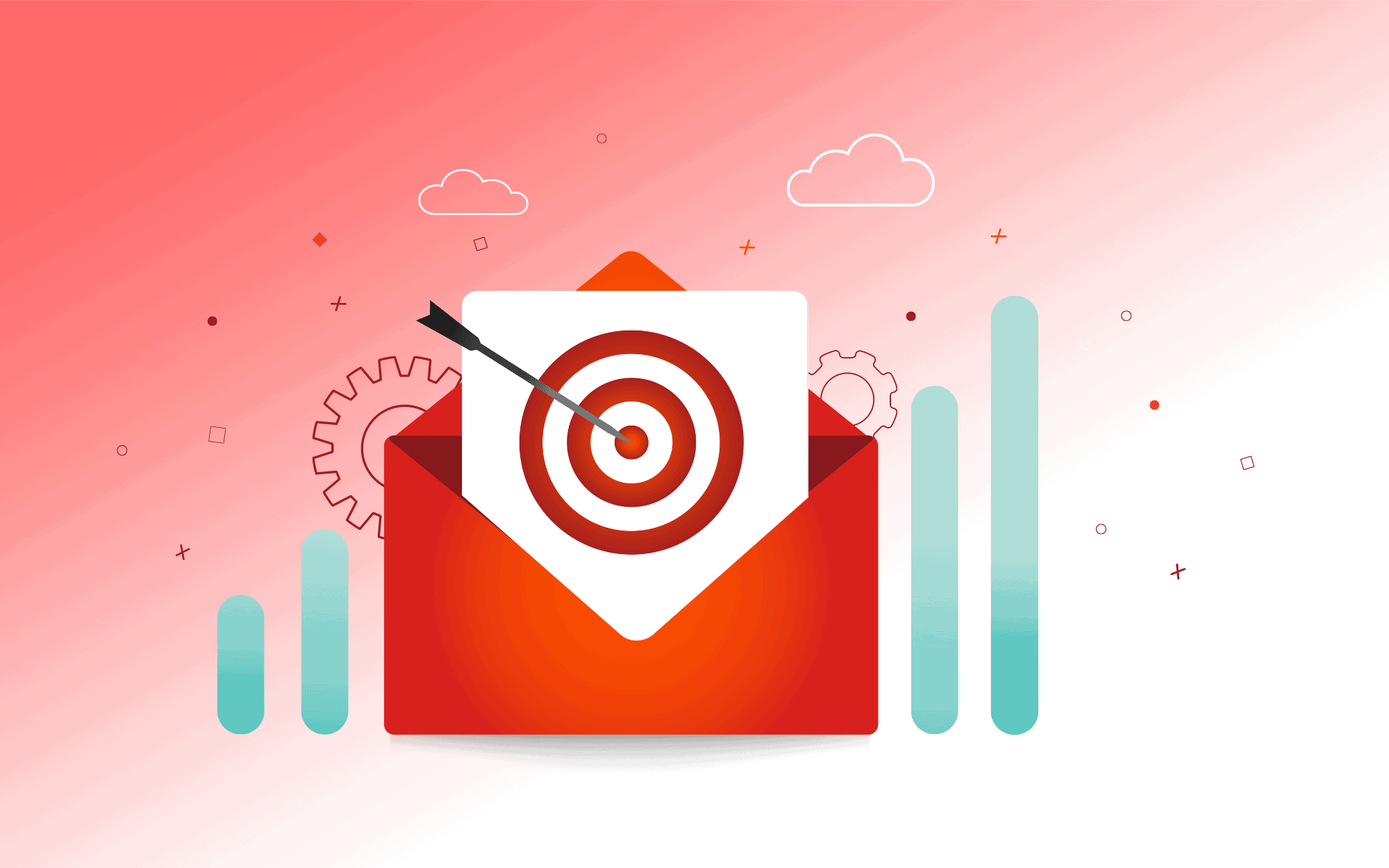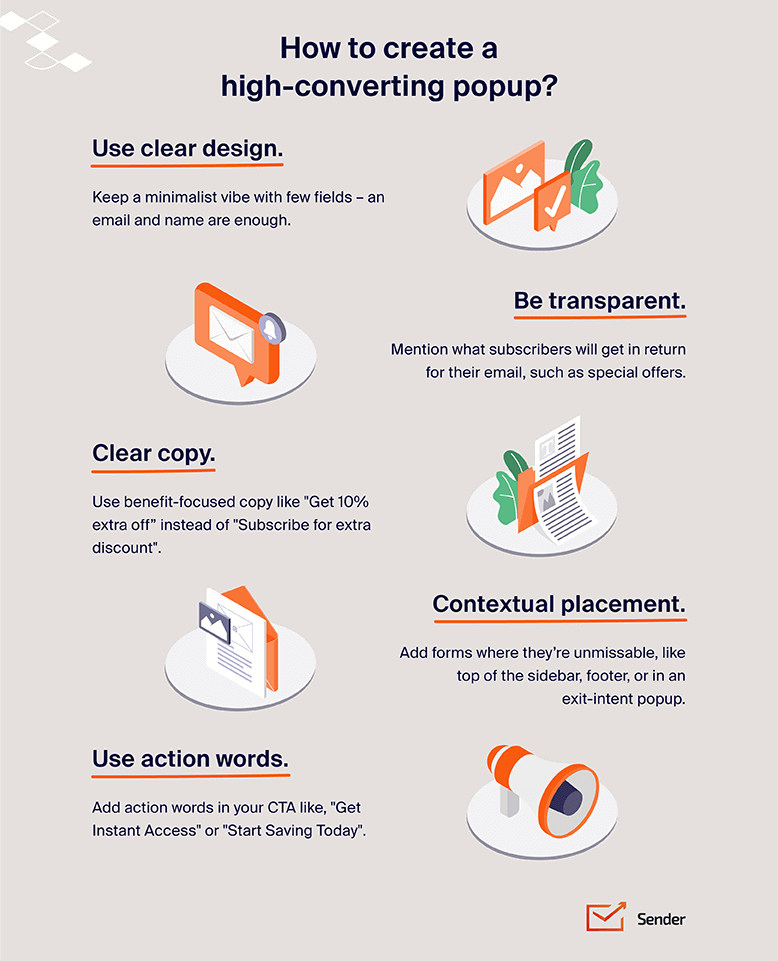Are you looking to boost your business with more leads? Email marketing might be your secret weapon.
Imagine having a direct line to potential customers, right in their inbox. Sounds powerful, doesn’t it? Well, it is. Email marketing can help you connect with your audience, nurture relationships, and ultimately, convert prospects into loyal customers. But how do you effectively use it for lead generation?
You’ll discover simple, actionable strategies that can supercharge your lead generation efforts. You’ll learn how to craft compelling emails, segment your audience for maximum impact, and use automation to save time while boosting results. Ready to turn your email list into a lead generation machine? Let’s dive in!

Credit: keap.com
Understanding Email Marketing
Email marketing remains a powerful tool for businesses. It’s effective for lead generation. Understanding email marketing is crucial for success. Many businesses use it to reach potential customers. Email marketing helps build relationships with your audience. It offers a direct line of communication. This method lets you tailor messages to your audience’s needs. Learning its basics and role in lead generation is key.
Basics Of Email Marketing
Email marketing involves sending targeted emails to your audience. These emails can include newsletters, promotions, or updates. A clear subject line is important. It grabs attention and encourages opens. Personalizing emails increases engagement. Use the recipient’s name or past purchase history. Ensure your content is relevant and valuable. Optimize emails for mobile devices. Many people check emails on their phones. Include a clear call to action. Invite readers to respond or visit your website. Track email performance with metrics. Open rates, click-through rates, and conversions matter.
Role In Lead Generation
Email marketing plays a significant role in lead generation. It helps attract potential customers to your business. Share informative content to educate your audience. Offer exclusive deals to entice new subscribers. Create a sign-up form on your website. Encourage visitors to join your email list. Segment your audience based on interests or behavior. Send targeted emails to specific groups. Automate your email campaigns to save time. Use tools to send emails at the right time. Nurture leads by providing valuable content regularly. Build trust and guide them through the sales funnel.
Building A Quality Email List
Email marketing is a powerful tool for lead generation. Building a quality email list is crucial. A well-constructed list ensures your messages reach interested recipients. This boosts engagement and improves conversion rates. Creating a targeted list requires careful planning and strategy.
Importance Of A Targeted List
A targeted email list focuses on people likely to be interested. It increases the chances of conversion. Sending emails to a broad audience can lead to lower engagement. A targeted list ensures your emails are relevant. This relevance makes recipients more likely to act.
Understanding your audience is key. Know their interests and preferences. Use this knowledge to tailor your messages. This makes your emails more appealing.
Strategies To Grow Your List
There are many ways to grow your email list. Offer incentives to encourage sign-ups. Free resources or discounts can attract potential leads.
Use social media to reach wider audiences. Share your newsletter sign-up link on platforms. Collaborate with influencers to expand your reach.
Optimize your website for email collection. Use pop-ups and embedded forms. Make it easy for visitors to subscribe.
Host webinars or online events. Gather emails during registration. This helps in building a list of interested prospects.
Regularly update and clean your list. Remove inactive subscribers. This ensures your list remains effective.
Crafting Effective Emails
Crafting effective emails for lead generation involves understanding your audience. Targeted content grabs attention and builds interest. Clear calls to action guide potential leads towards conversion, fostering engagement.
Crafting effective emails is essential for successful lead generation. It involves creating messages that grab attention and encourage action. This requires a blend of creativity and strategic thinking. Well-crafted emails can turn potential leads into loyal customers. Here’s how you can craft emails that engage and convert.Subject Lines That Capture Attention
Subject lines are the first thing readers see. A compelling subject line makes your email stand out. Keep it short and direct. Aim for 6-10 words. Use words that spark curiosity or offer a benefit. Personalization boosts open rates. Include the recipient’s name for a personal touch.Creating Engaging Content
The content should match the subject line. Start with a strong opening. Ask a question or present a fact. Keep paragraphs short for easy reading. Use bullet points for clarity. Share valuable insights or tips. Make your content relevant to the reader’s needs. This builds trust and interest.Call To Action Tips
A clear call to action (CTA) is crucial. Tell readers what you want them to do next. Use action-oriented language. “Download now” or “Get started today” works well. Place the CTA prominently. Use contrasting colors to make it stand out. Keep it simple and direct. A strong CTA drives conversions.Segmentation And Personalization
Utilize segmentation and personalization in email marketing to attract potential customers. Tailor your messages to specific audience segments. Address their unique needs and interests to boost engagement and lead generation.
Email marketing remains a powerful tool for lead generation. Segmentation and personalization are key strategies. They help to target the right audience. These tactics can make your messages more relevant. When you tailor content, engagement rates improve. This approach fosters stronger connections with potential leads.Benefits Of Segmenting Your Audience
Segmenting your audience involves dividing them into groups. Each group shares common characteristics. This allows for more targeted messaging. It leads to higher open rates. It boosts click-through rates. People receive content that matters to them. Segmentation reduces unsubscribe rates. It helps in understanding customer needs better. You can tailor products or services accordingly.Personalization Techniques
Personalization adds a human touch to emails. Use the recipient’s name in the subject line. Include personalized recommendations based on past behavior. Segment lists by interests or purchase history. Send birthday or anniversary emails. Create dynamic content that changes based on user data. Personalization increases trust. It enhances customer loyalty. It makes your emails stand out in crowded inboxes.Automation In Email Marketing
Email marketing has become a powerful tool for lead generation. Automation in email marketing enhances efficiency and effectiveness. It allows businesses to engage with potential leads without constant manual effort. Understanding how to use automation can transform your email strategy. It saves time and ensures consistent communication with prospects.
Using Automation Tools
Automation tools streamline the email marketing process. They help schedule and send emails at optimal times. Many platforms offer automation features. These tools can segment your audience based on behavior and preferences. You can personalize messages for each segment. This increases the chances of conversion. Choose a tool that suits your business size and goals. Many options are available, each with unique features.
Setting Up Automated Campaigns
Automated campaigns target potential leads with precision. Start by defining your goals. What do you want to achieve with each campaign? Create a workflow for your email sequence. This includes welcome emails, follow-ups, and reminders. Use templates to maintain brand consistency. Test different versions to see what works best. Automation allows you to track performance. Adjust your strategy based on the results.

Credit: www.abstraktmg.com
Analyzing Email Campaign Performance
Email marketing is a powerful tool for lead generation. To ensure success, analyzing email campaign performance is crucial. Understanding how your emails perform helps improve strategies. This process involves tracking specific metrics and refining your approach. Effective analysis leads to better engagement and conversion rates.
Key Metrics To Track
Tracking metrics guides your email marketing strategy. Open rates show how many recipients view your email. High open rates suggest strong subject lines. Low rates indicate the need for improvement. Click-through rates measure engagement with your content. They reveal how compelling your call-to-action is. Conversion rates show how many recipients become leads. High conversion rates indicate successful campaigns. Unsubscribe rates measure audience satisfaction. High unsubscribe rates may point to irrelevant content.
Improving Campaign Effectiveness
Improving your campaign involves testing and refining. A/B testing compares different email elements. Test subject lines, images, and content. Choose the options with better performance. Personalization increases engagement. Tailor content to recipients’ interests. Segment your audience based on demographics. Send targeted emails to each segment. Adjust frequency based on subscriber preferences. Too many emails can annoy readers. Analyze the data and make informed decisions. Use the insights to create better campaigns.
Compliance And Best Practices
Email marketing is a powerful tool for lead generation, but success hinges on compliance and best practices. Navigating regulations can be daunting, yet it’s essential to maintain trust with your subscribers. This trust is the cornerstone of effective email marketing. By understanding the rules and putting your subscribers first, you can build a strong foundation for your campaigns.
Understanding Regulations
Regulations like GDPR and CAN-SPAM Act govern how you handle email marketing. These rules are designed to protect consumer privacy and prevent spam. You must know what these regulations entail to avoid hefty fines. For example, GDPR requires explicit consent from subscribers. Make sure your opt-in forms are clear and straightforward.
Always offer an easy way to unsubscribe. This is not just a legal requirement but also a way to respect your audience’s choice. Have you ever been stuck on an email list you didn’t want to be part of? It’s frustrating, right? Offering an easy opt-out builds goodwill. It shows you value your subscribers’ preferences.
Maintaining Subscriber Trust
Trust is crucial in email marketing. People share their email addresses with you because they trust you. Your responsibility is to honor that trust. Avoid misleading subject lines and provide valuable content. Think about the emails you love receiving. They’re probably informative or entertaining, right?
Consider personalization as a tool to enhance trust. Addressing your subscribers by name can make emails feel more personal. But be cautious, and don’t overdo it. Authenticity is key. Have you ever received an email that felt too much like a sales pitch? It probably made you hit delete quickly. Focus on building relationships, not just selling.
Regularly update your email list to ensure it’s fresh and active. An outdated list can lead to high bounce rates and damage your sender reputation. Are you sending emails to people who haven’t engaged in months? It might be time to clean up your list. Remember, a smaller, engaged audience is better than a large, disengaged one.
Compliance and best practices are about respecting your subscribers and being transparent. If you keep these principles in mind, your email marketing efforts will be more fruitful. How do you plan to enhance your email campaigns? Your subscribers are waiting to hear from you in a genuine and respectful way.
Case Studies And Success Stories
Explore how businesses boost lead generation through email marketing. Learn strategies that drive engagement and capture potential clients. Discover real-life success stories and see what works in different industries.
Email marketing is a powerful tool for lead generation, and nothing illustrates its potential better than real-world success stories. These case studies provide valuable insights into what works and what doesn’t. By examining these examples, you can learn from others’ experiences and apply those lessons to your own email marketing efforts.Examples Of Successful Campaigns
Consider the campaign run by Company X, a small e-commerce business. They wanted to increase their subscriber base and drive more sales. By offering a 20% discount to new subscribers, they saw a 40% increase in sign-ups within a month. Their follow-up emails included personalized product recommendations, leading to a 25% boost in sales. Another inspiring example is from Non-Profit Y. They aimed to raise awareness and funds for a new project. Through storytelling and impactful visuals in their emails, they engaged their audience emotionally. This strategy resulted in a 30% increase in donations compared to their previous campaigns.Lessons Learned
What can you take away from these stories? First, offering incentives like discounts can effectively grow your subscriber list. However, ensure the offer aligns with your brand and attracts the right audience. Personalization is key. Company X’s personalized recommendations improved sales by making customers feel valued and understood. Are you making your emails relevant to your audience? Emotional engagement can significantly impact your campaign’s success. Non-Profit Y’s storytelling approach created a strong connection with their subscribers. How can you craft a narrative that resonates with your audience? Reflect on these questions as you plan your next email marketing campaign. Each story provides a blueprint for success, but remember, your unique audience might require a unique approach.
Credit: www.sender.net
Frequently Asked Questions
Can You Generate Leads Through Email Marketing?
Yes, email marketing can effectively generate leads. Craft engaging content, target the right audience, and use compelling calls-to-action. Personalize emails to increase engagement and build trust. Monitor performance metrics to optimize strategies. Consistent follow-up can nurture leads and convert them into customers.
What Is The 80/20 Rule In Email Marketing?
The 80/20 rule in email marketing suggests focusing 80% on valuable content and 20% on promotions. This strategy enhances engagement and builds trust, leading to better conversion rates. Prioritizing audience needs over sales pitches improves open rates and strengthens relationships with subscribers.
What Are The 4 P’s Of Email Marketing?
The 4 P’s of email marketing are: Personalization, ensuring messages are tailored; Permission, obtaining consent; Promotion, offering enticing deals; and Performance, measuring campaign success.
What Is The Rule Of 3 In Email Marketing?
The rule of 3 in email marketing suggests focusing on three key points for clarity and engagement. This approach simplifies content, enhances readability, and increases the likelihood of action from recipients. Prioritize concise subject lines, main messages, and calls to action to effectively communicate your email’s purpose.
Conclusion
Email marketing is a powerful tool for lead generation. Craft clear, engaging messages. Personalize content to connect with your audience. Use strong subject lines. Keep your emails concise and relevant. Segment your audience for better targeting. Monitor your performance with analytics.
Adapt your strategies based on results. Consistency is key in building relationships. Encourage recipients to take action. Offer value in each email. Remember, the goal is to nurture leads effectively. With time, your efforts will pay off. Lead generation through email can drive growth and success.
Stay committed and watch your business thrive.

